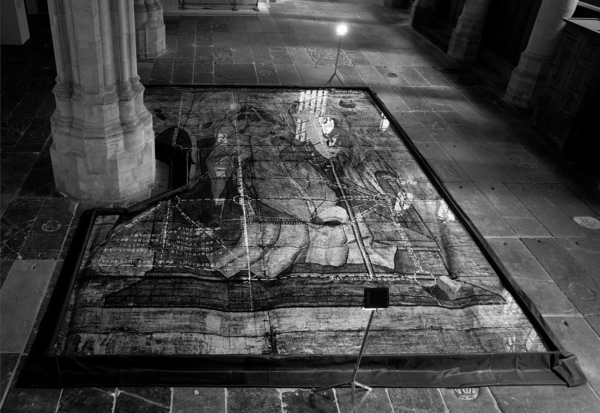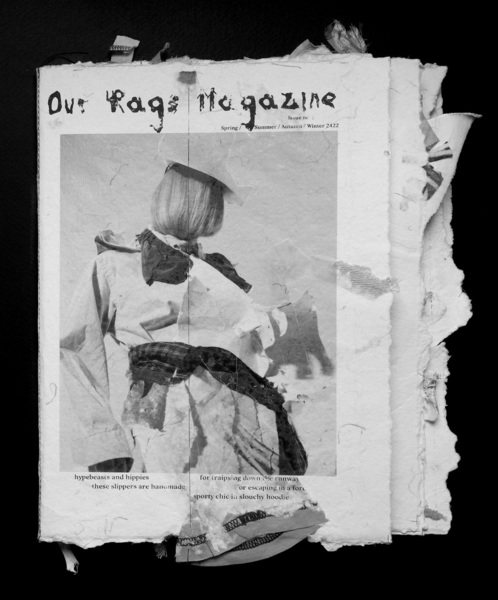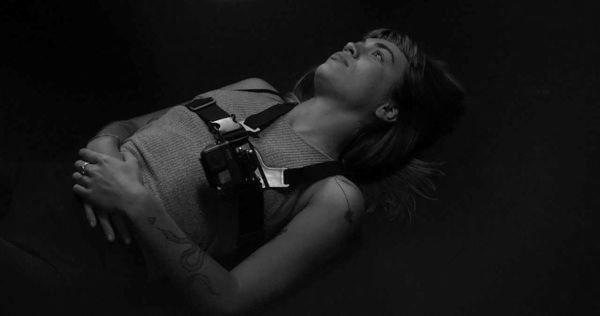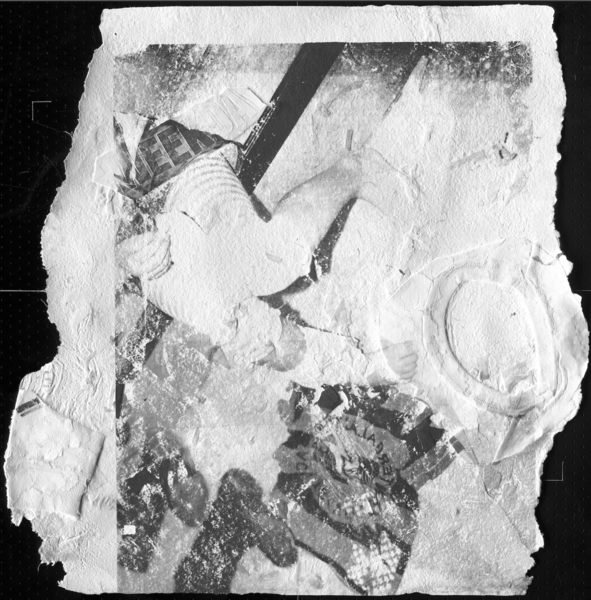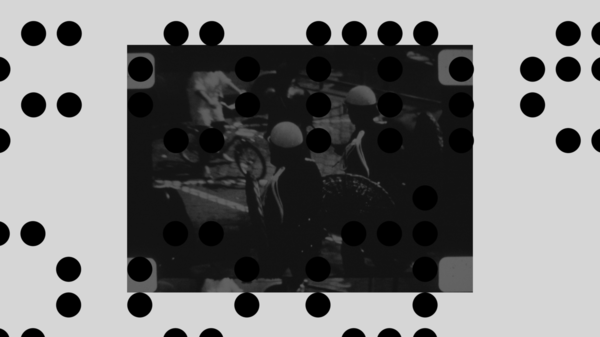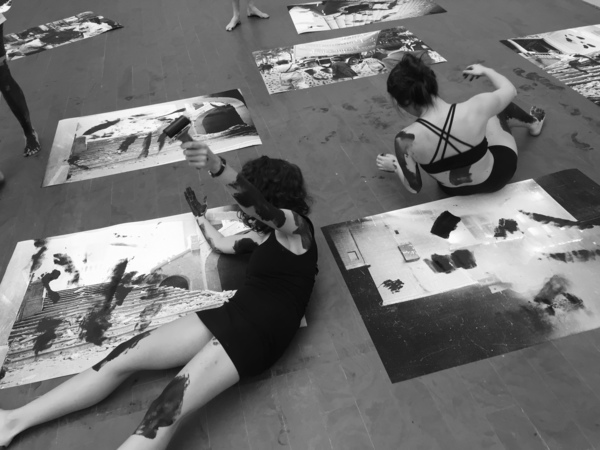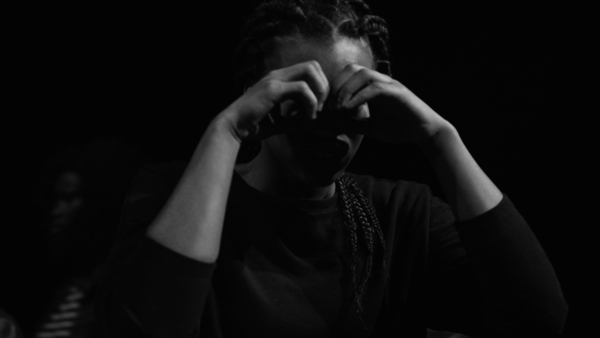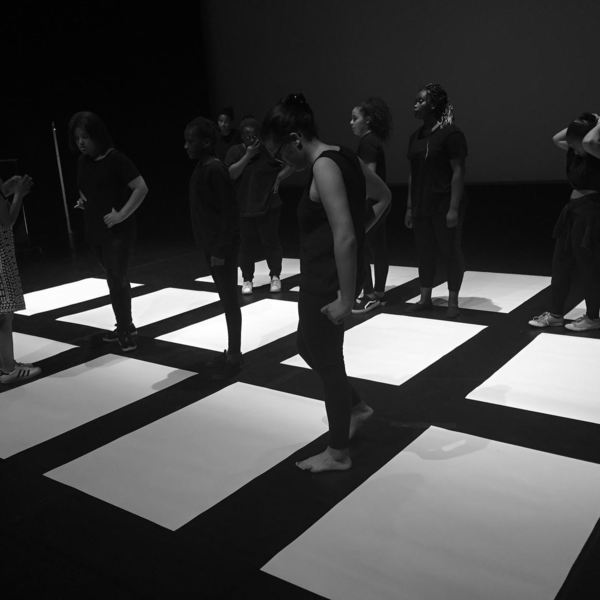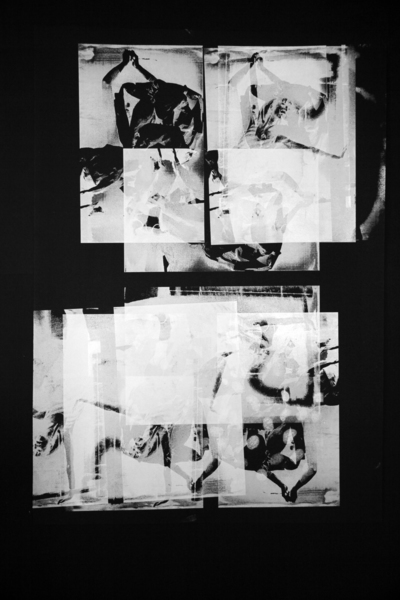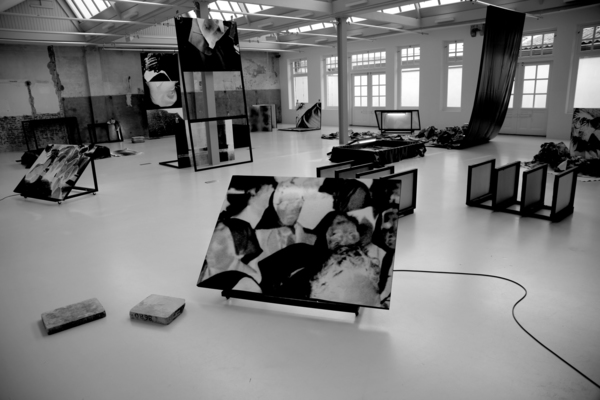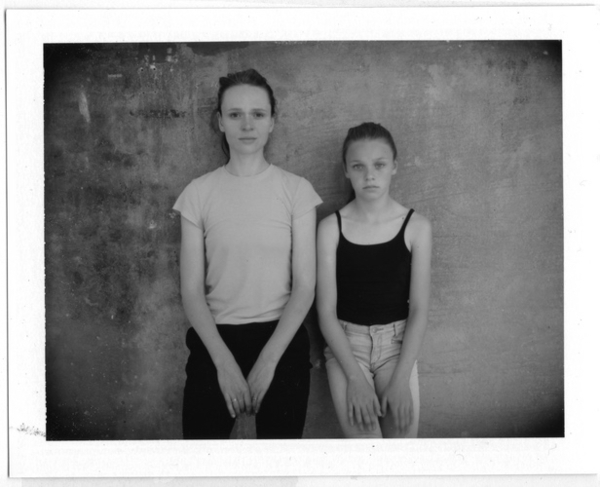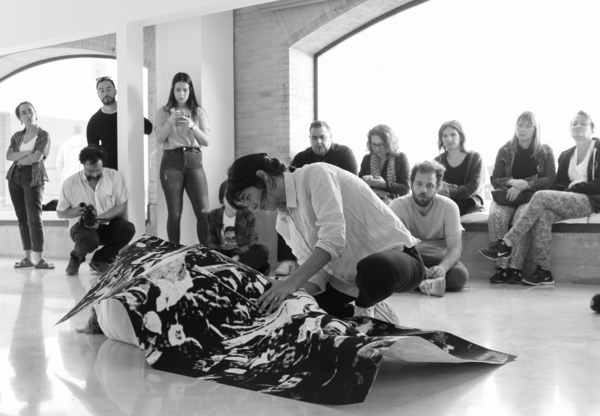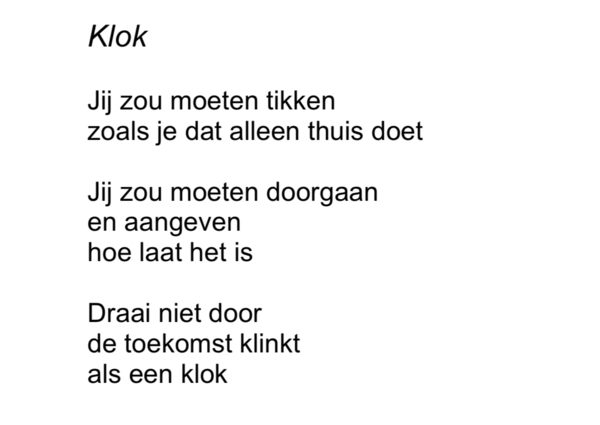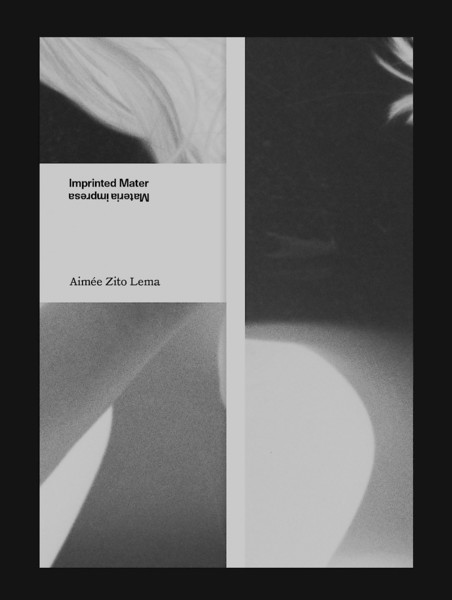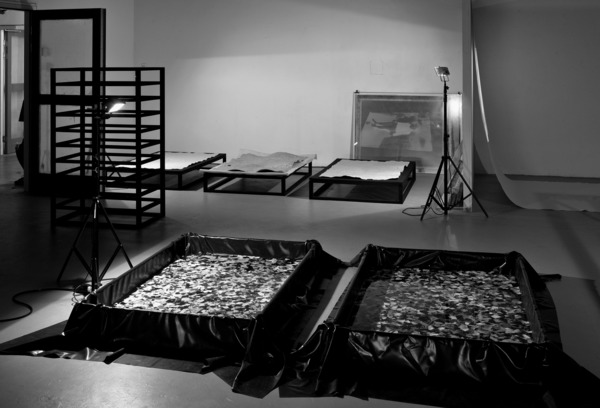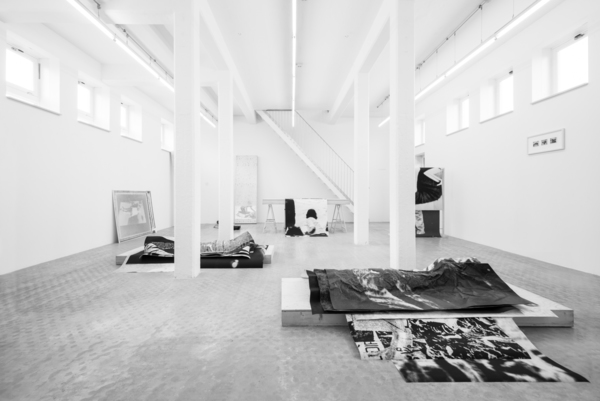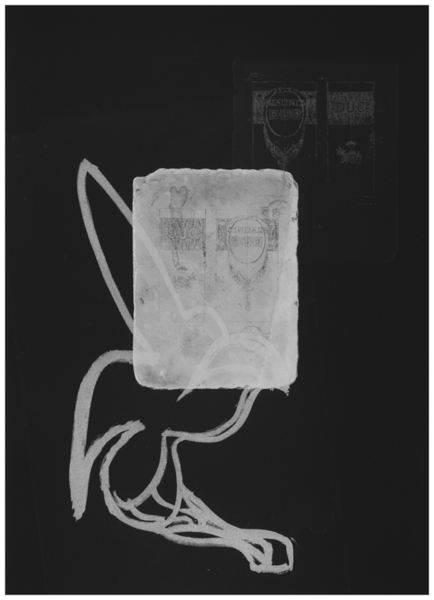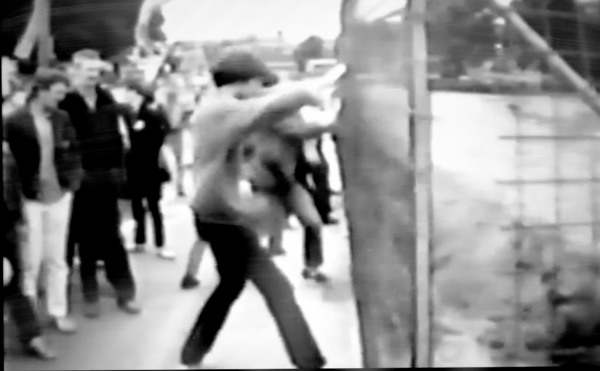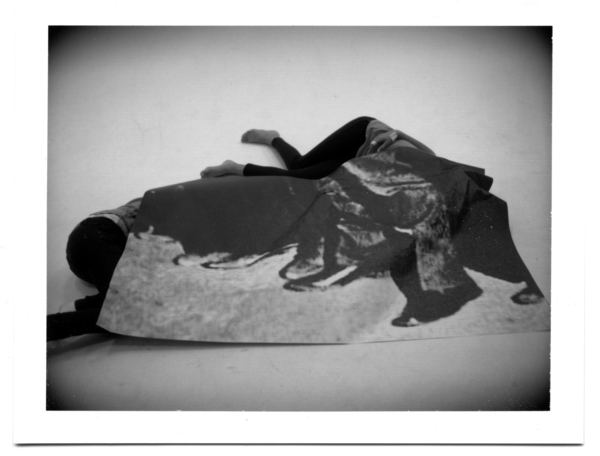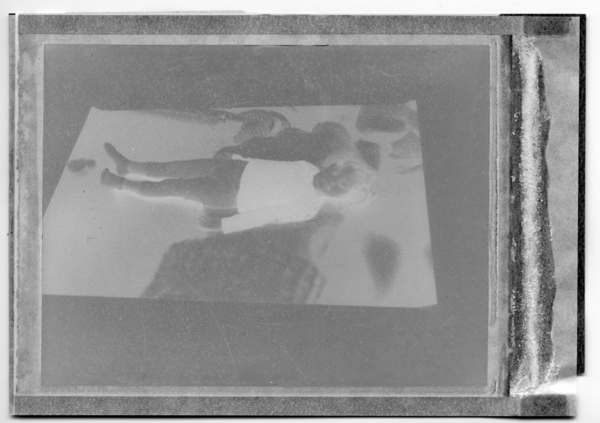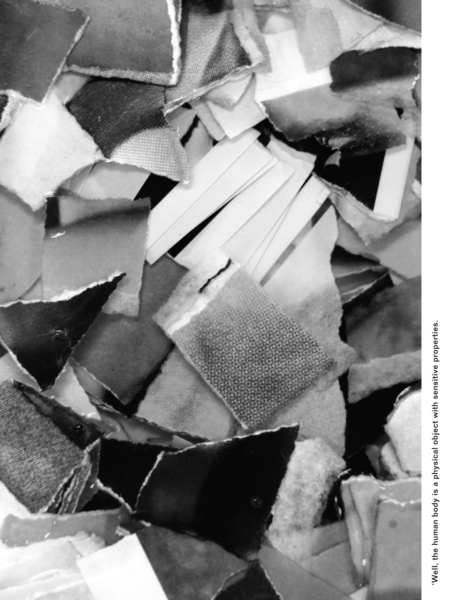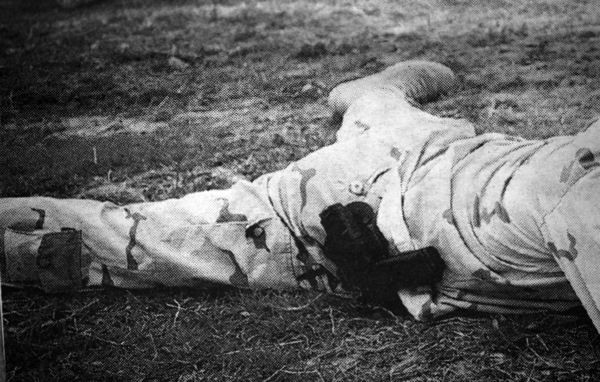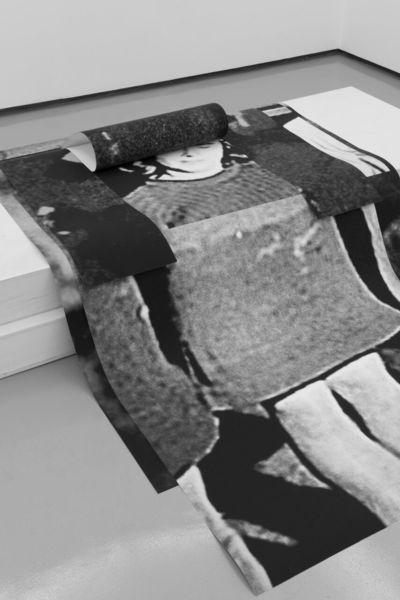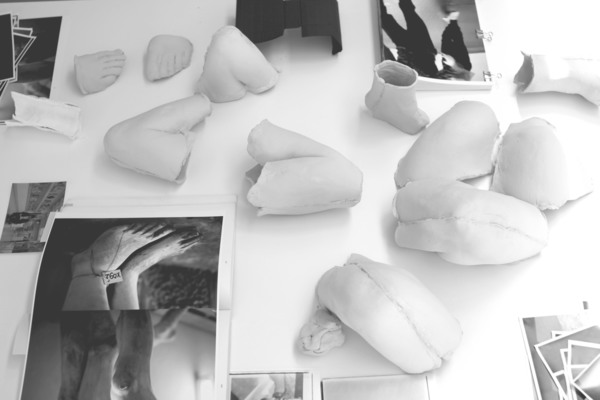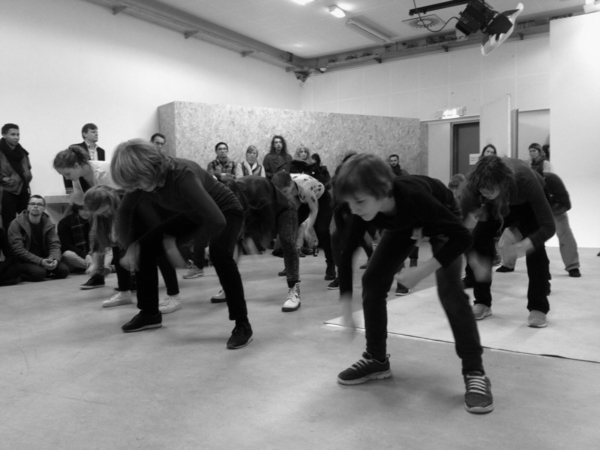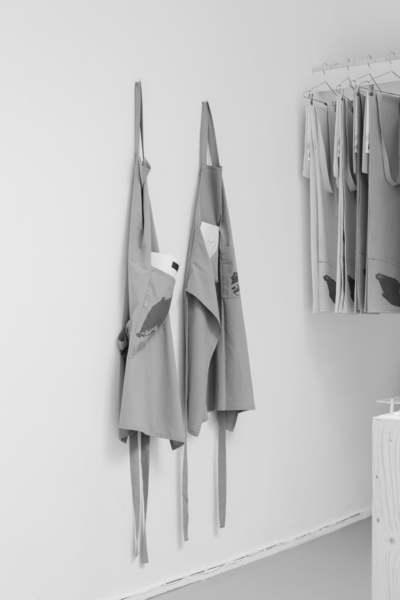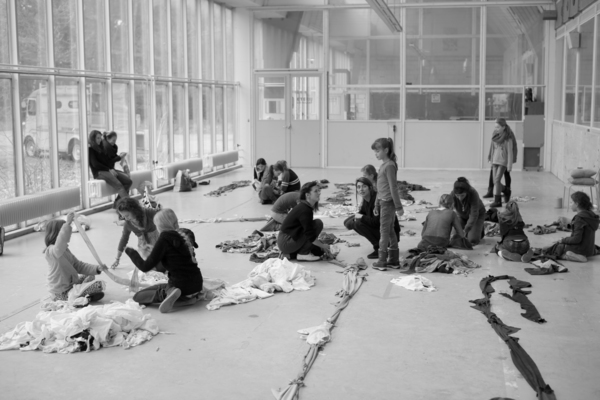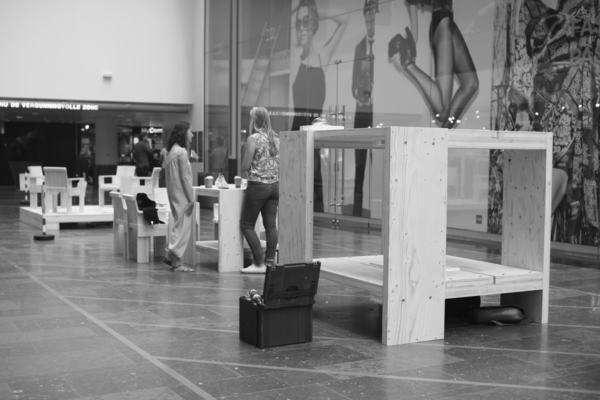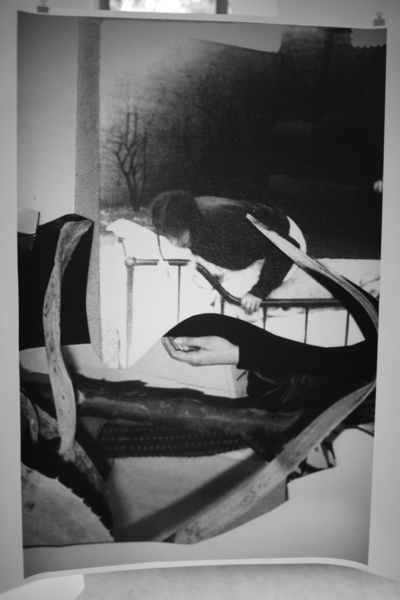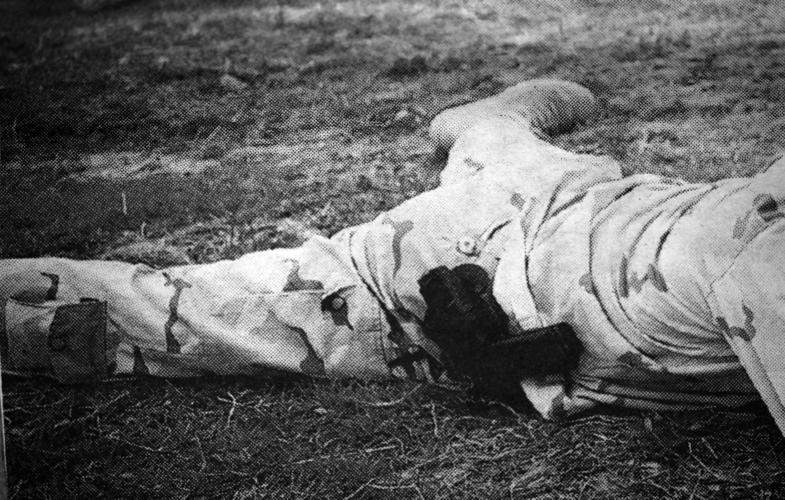Algunas Formas de Amistad -Exhibition- (2016)
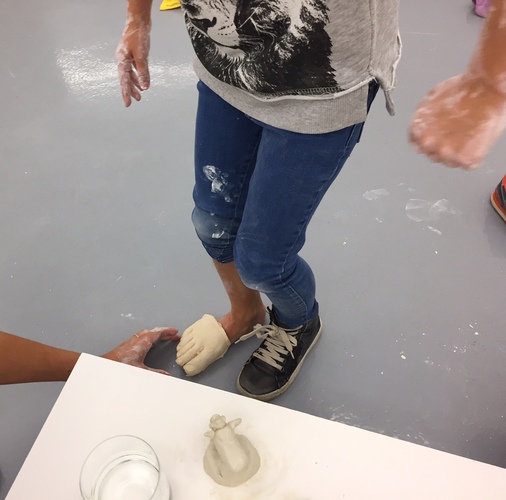
The Goma Gallery, Madrid / Curated and exhibition text by: Violeta Janeiro Alfageme
The forces of production precipitate historic events which the human being is then forced to react against. The mass media deliberately obfuscate any attempt to get a clear grasp on an event, and history books advance an interpretation of the facts which leaves itself open to question by means of an exercise in abstraction. Expanding an insignificant event, isolating a sudden movement, choosing an affective gesture and zeroing in on it until we lose ourselves in the sounds it emits, the grain of the photo or the word that names it, furnishes us with a chance to reinterpret the events as they are presented to us, and of understanding history from new perspectives.
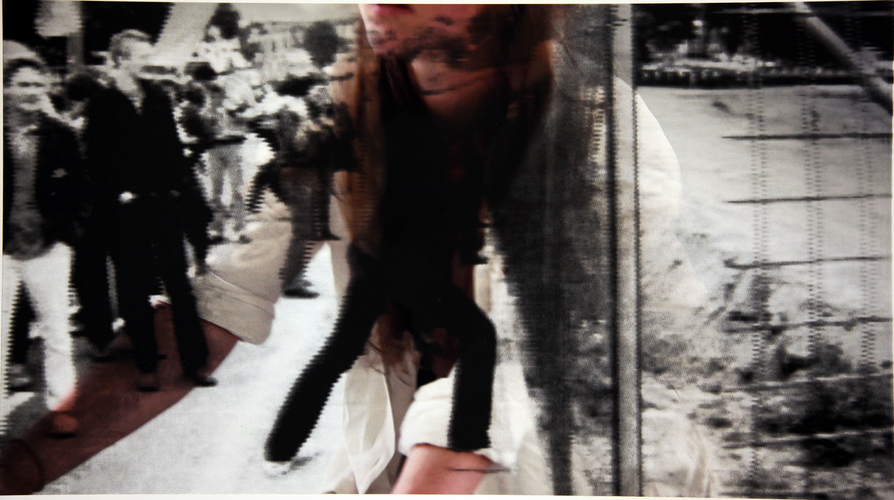
Aimée Zito Lema grounds her practice in this premise. Based on a process of selection and appropriation, Zito Lema zooms in on the detail of gestures in archive images taken of working class demonstrations or counter-cultural movements in The Netherlands and Argentina—the artist was born in Amsterdam and grew up in Buenos Aires. This motif, once enlarged almost to the point of abstraction, brings to mind the mechanism that enables cooperation and development within a community, or a movement, or an affective structure than bonds a group or a family. It is revealed to us in her work, just as a tiny detail can give rise to a community spirit and all that this brings with it. Her artistic practice structures the narrative around the process, triggering a dynamic that, taken together, lends meaning to the work. The idea leads to an expression, act or performance which is carried out together with a group of local people. This work in turn gives rise to the object that, inasmuch as a metaphor, returns us to the expression from which it came, only to be recycled and give birth to new possibilities.
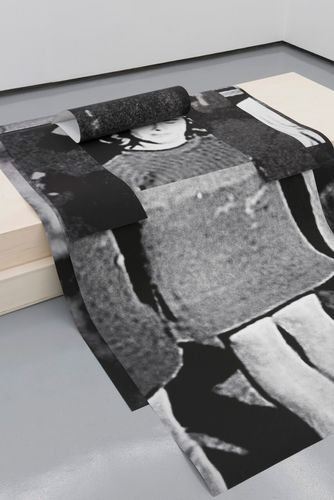
Several Forms of Friendship features three bodies of work revolving around collaborative acts and expressions in pursuit of social influence. Each one of the actions is circumscribed to a specific political event within the local context. Underlying all the works is the idea of movement captured in images that uncover a force able to activate the necessary stimuli of reaction and support for the constitution of the local community. Structures that are at once both support and content connect the symbolism of the image with the physicity of the wood support, thus constructing its meaning, and revealing the absent body through its gravity. The works on view in the first space are based on various acts of protest held in Argentina in recent history. They are detailed photos in which the artist undertakes a subtle symbolic analysis of acts of resistance against repressive structures that strive to quash any kind of activity. The work De la serie de gestos - El cuerpo subversivo- (2016) is based on archive images of demonstrations in the 1960s and 70s. Printed at large scale, they rest on two pinewood boards, affecting the intensity that something so minimal could attain in contrast with the corporeity of the wood, taking abstraction almost to the limits of the conceptual.
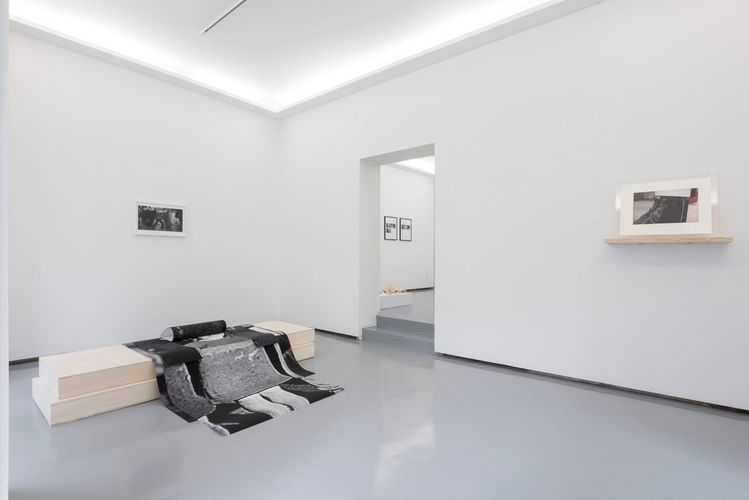
Sin Titulo (Maximiliano Kosteki y Darío Santillán, asesinados por la Policía en la estación de trenes de Avellaneda, Provincia de Buenos Aires, 26 de Junio de 2002) (2016) shows a detail of the feet of Maximiliano Kosteki, an Argentinian activist who died alongside his colleague Darío Santillán during the Avellaneda massacre, which was triggered by the political crisis in Argentina at that time, in which the police charged against demonstrators who were demanding benefits for the poorest levels of society. The police, unaware of the symbol it had created with the death of two innocent people, placed the body of Maximiliano in the form of an upside down cross, as if he were a martyr.
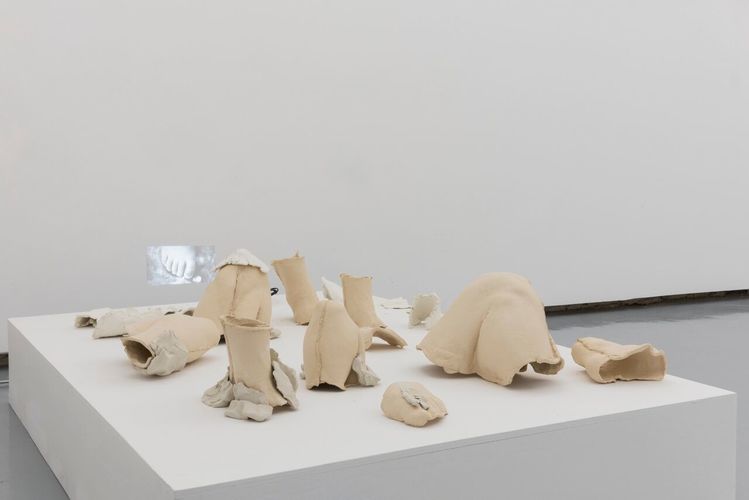
The work De la serie de gestos -Categorías- (2015) consists of a number of 10 x 15 cm photos arranged within the same frame. They are all images of affect and resistance that speak to any revolution, to any act of opposition or protest, as something indivisible that is inconceivable separately. In the second space, the work Rond de Jambe (2016) consists of silk-screened photos of acts of protest held in Amsterdam between 1979 and 1986 by countercultural movements protesting against the construction of the Stopera building complex which currently houses the city hall and an art centre for ballet, theatre and opera. Zito Lema establishes a connection between a political protest movement and the movement of the body through a performance created in collaboration with a dancer and an audience, in which the latter harmonically assimilate the movements of resistance. An ideology and a political sentiment are transmitted through the body. The photos on view superimpose archive images of demonstrations with images of dancers performing choreographies of the very same acts.
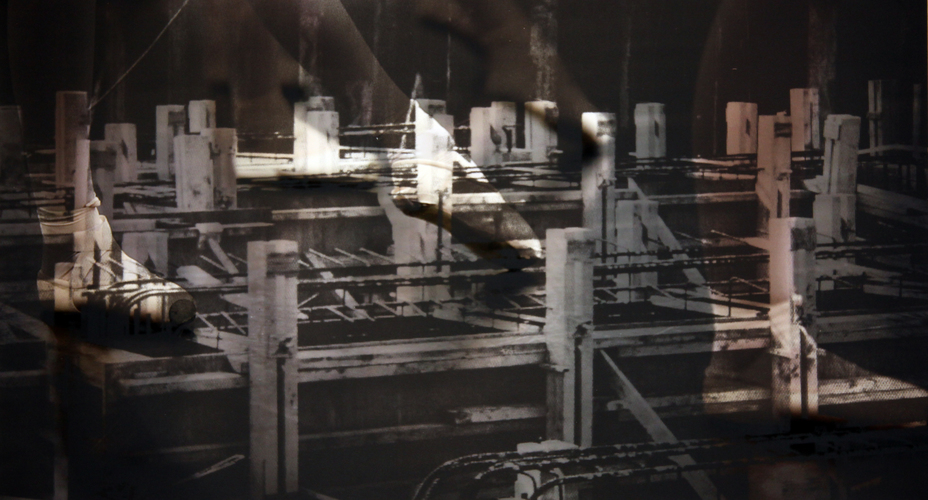
The work Several Forms of Friendship (2016) also lends it name to the exhibition as a whole. It comprises an installation of ceramic pieces and a projection. The ceramics are casts taken from the joints of the artist’s friends and family, and are presented unfinished as if pieces in development, in the midst of the process. Once again, the gesture is what really matters, to which another gesture is added, this time a symbolic gesture which is created from the pieces of clay that the artist’s daughter incorporates into the ceramics, turning her into the thread running through both pieces. Her print runs through the structures that respond to a classic canon in projection, or else they run through the real body of a friend of family transferred to the ceramics. In recognising the dimensions, textures and temperature of these sculptures, the structures of learning that give us the measure of things begin to take form, and from there we can begin to form a critical gaze. The exhibition plays with the distance of the beholder, in such a way that the concrete becomes abstract and vice versa. Only in this way can we gain sufficient perspective to analyse and reconstruct events narrated from empowering affect.
Violeta Janeiro Alfageme
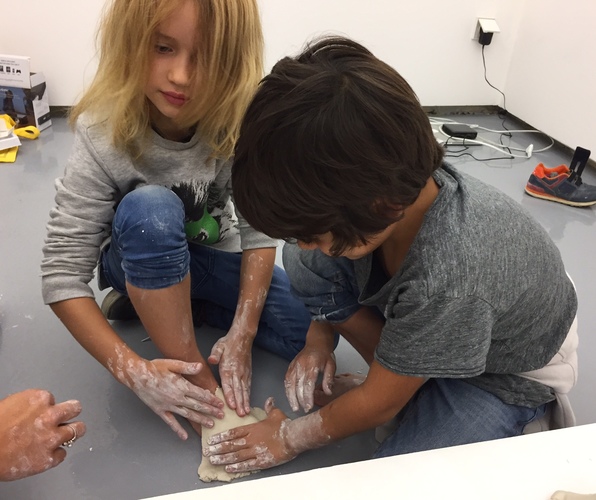
Texto en Español:
Las fuerzas de producción desencadenan acontecimientos históricos frente a los cuales el ser humano se ve abocado a reaccionar. Los medios de comunicación fomentan la confusión a la hora de esclarecer un suceso, y los libros de historia nos ofrecen una interpretación de los hechos que cabe cuestionarse a través de un ejercicio de abstracción. Ampliar un acontecimiento inútil, aislar un movimiento repentino, seleccionar un gesto afectivo y engrandecerlo hasta que nos perdamos en el sonido que lo enuncia, el grano que lo fotografía o el verbo que lo nombra, nos brinda la oportunidad de reinterpretar los acontecimientos que nos son dados, de entender la historia tomando nuevos puntos de referencia.
La línea de trabajo de Aimée Zito Lema se origina en este enunciado. A partir de la selección y apropiación, Zito Lema fotografía el gesto, visto en detalle, de imágenes de archivo tomadas de manifestaciones de la clase trabajadora o de movimientos de contracultura en Holanda y Argentina - la artista nació en Amsterdam y creció en Buenos Aires -. Este motivo ampliado hasta casi la abstracción, nos lleva a pensar en el engranaje que articula la cooperación y desarrollo de una comunidad, de un movimiento, o de la estructura afectiva que vincula a un grupo o familia. En su trabajo se nos revela cómo a partir de un detalle ínfimo se desarrolla un espíritu comunitario y lo que esto conlleva. Su práctica artística estructura la narrativa a partir del proceso, desencadenando una dinámica que en su conjunto da sentido a la obra. De la idea surge la manifestación, acto o performance, que se desarrolla con un grupo de personas del lugar. De ese trabajo se formaliza el objeto que como una metáfora nos devuelve a la manifestación de dónde viene, para luego reciclarse y dar lugar a nuevas posibilidades. Algunas Formas de Amistad muestra tres grupos de trabajo que se articulan en torno a actos y manifestaciones colaborativas que persiguen la influencia social. Cada una de sus acciones se circunscribe a algún acontecimiento de carácter político en el contexto donde se desarrolla. En todas las obras subyace la idea del movimiento capturado en imágenes que muestra una fuerza capaz de accionar estímulos de reacción y apoyo necesarios en la constitución de la comunidad. Estructuras que son a su vez soporte y contenido ponen en relación lo simbólico de la imagen con la física de su soporte en madera, construyendo así su significado, y revelando el cuerpo ausente a partir de su gravedad. Las obras que se muestran en el primer espacio, parten de diferentes actos reivindicativos ocurridos en Argentina a lo largo de su historia reciente. Son fotografías detalle a través de las cuales la artista lleva a cabo el análisis sutil y simbólico de actos de resistencia frente a aquellas estructuras que reprimen y congelan cualquier tipo de actividad.
La obra De la serie de gestos - El cuerpo subversivo- (2016) responde a imágenes de archivo de manifestaciones ocurridas en los años sesenta y setenta. Impresas a gran escala, reposan sobre dos tablones de madera de pino, repercutiendo en la intensidad que puede alcanzar algo mínimo en contraste con la corporeidad de las maderas, que llevan la abstracción hasta los límites de lo conceptual. Sin Titulo (Maximiliano Kosteki y Darío Santillán, asesinados por la Policía en la estación de trenes de Avellaneda, Provincia de Buenos Aires, 26 de Junio de 2002) (2016) recoge el detalle de los pies de Maximiliano Kosteki, militante argentino que muere junto a su compañero Darío Santillán durante la masacre de Avellaneda, que se desencadenó fruto de la crisis argentina de aquellos años y en la cual la policía cargó contra unos manifestantes que reclamaban ayudas para los estratos más desfavorecidos de la sociedad. La policía, inadvertida del símbolo que había creado con la muerto de dos inocentes, situó el cuerpo de Maximiliano en forma de cruz inversa, como si de un mártir se tratase.
Fotografías de 10x15cm organizadas dentro de un mismo marco conforman la obra De la serie de gestos -Categorías- (2015). Son imágenes de afecto y resistencia que responden a cualquier revolución, a cualquier acto de oposición o apoyo, como algo indivisible e inconcebible por separado. En el segundo espacio Rond de Jambe1 (2016), son fotografías serigrafiadas de los actos de protesta que se llevaron a cabo en Amsterdam entre 1979 y 1986 por fuerzas de contracultura que reaccionaron ante la construcción del edificio Stopera, que alberga hoy al ayuntamiento y sirve de escenario para las artes, como el ballet, el teatro y la ópera. Zito Lema relaciona un movimiento político de oposición con el movimiento del cuerpo a través de una performance desarrollada en colaboración con una bailarina y un publico asistente, dónde estos últimos asimilan armónicamente los movimientos de resistencia. Se produce la transmisión de una ideología y de un sentimiento político a través del cuerpo. Las fotografías que se exponen superponen imágenes de archivo de las protestas con imágenes de bailarinas coreografiando los mismos actos.
Algunas formas de amistad (2016) da título a la exposición. Comprende una instalación de cerámicas y una proyección. Las cerámicas responden a las articulaciones de amigos y familiares de la artista, son piezas que se presentan en desarrollo, como si estuviesen en proceso, sin terminar. De nuevo el gesto es lo que importa, y a esto se le suma otro gesto más, el simbólico, que se crea a partir de los trozos de arcilla que incorpora la hija de la artista a las cerámicas, convirtiéndola a ella en el hilo conductor entre ambas piezas. Su huella recorre estructuras que responden a un canon clásico en la proyección, o bien, recorren el cuerpo real de un familiar o amigo transferido a las cerámicas. Al ir reconociendo las dimensiones, texturas y temperatura de estas esculturas, toman forma las estructuras de aprendizaje que nos dan la medida de las cosas, a partir de las cuales se articula una mirada crítica. La exposición juega con la distancia del observador, de manera que lo concreto se vuelve abstracto y viceversa. Solo así ganamos la suficiente perspectiva para el análisis y la reconstrucción de unos acontecimientos contados desde la afección que empodera.
Violeta Janeiro Alfageme
